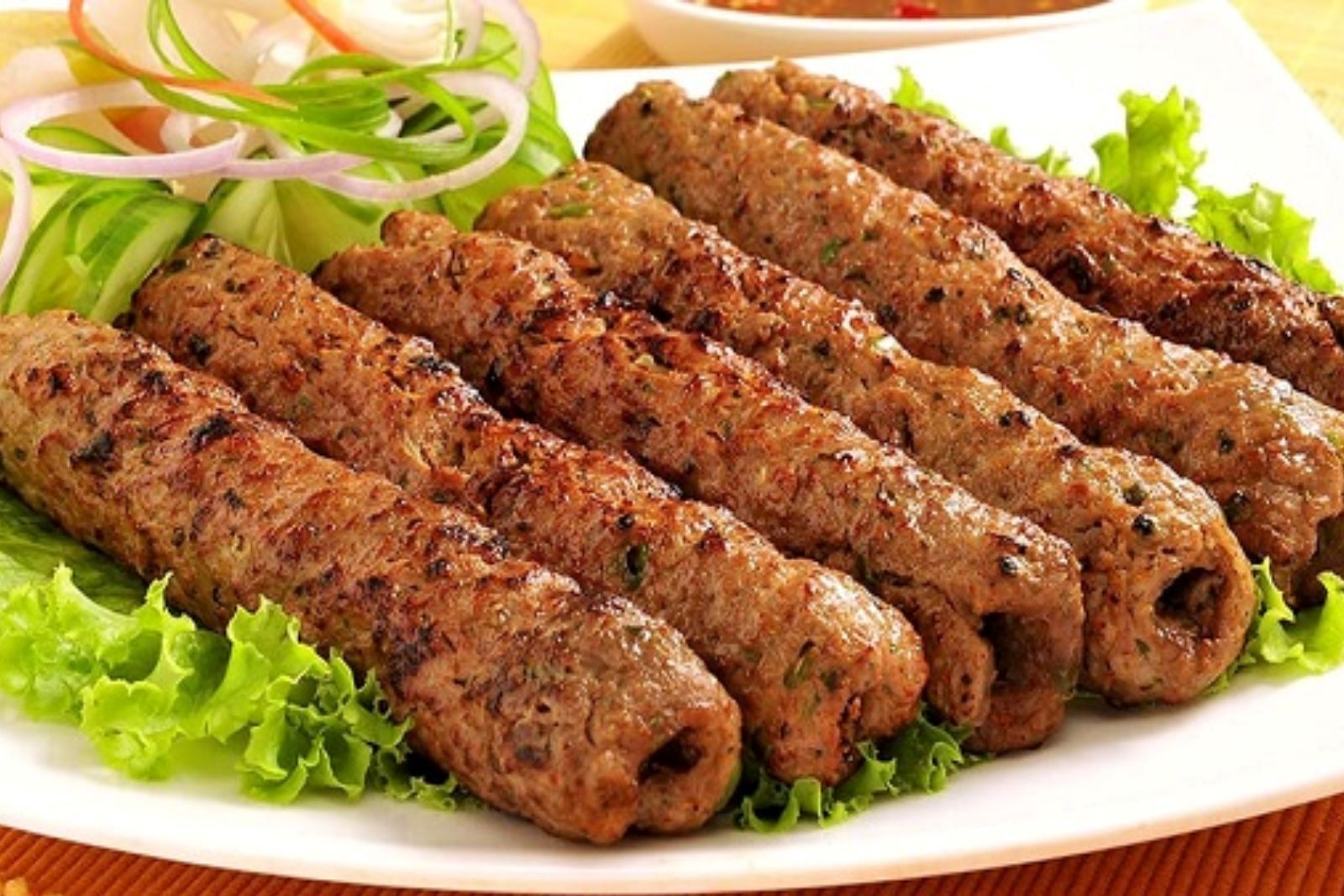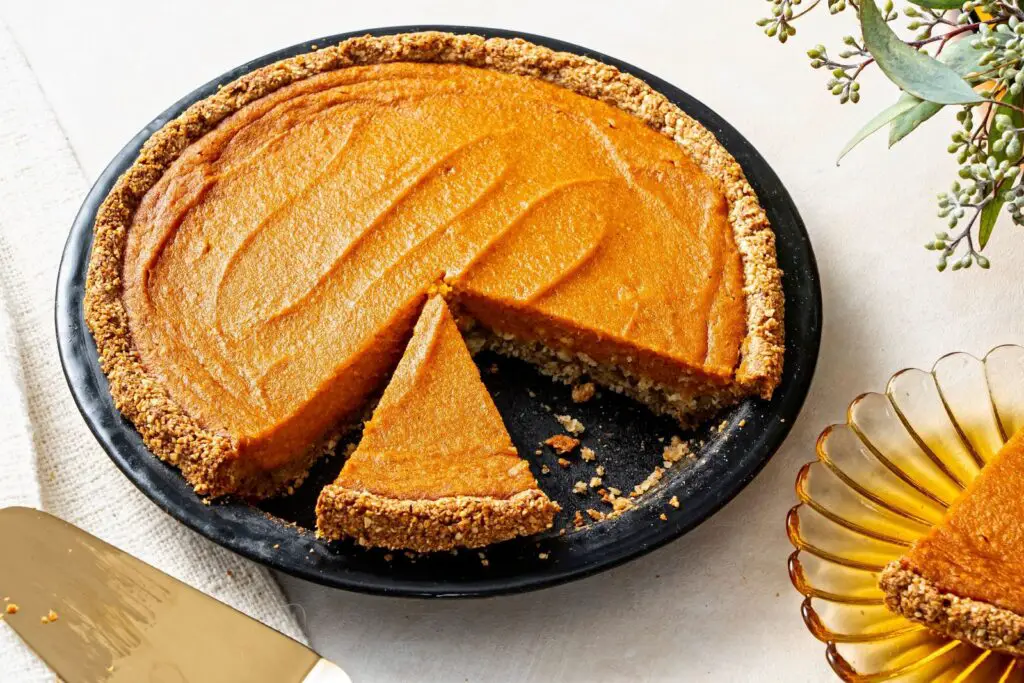
Seekh kababs are a specific type of kabab originating from the Indian subcontinent. They are made by combining minced or ground meat, such as lamb or beef, with a blend of aromatic spices and herbs. The mixture is then shaped into long, cylindrical kebabs and grilled on skewers, resulting in juicy and flavorful meat with a slightly smoky flavor. Whether you have leftovers or want to prepare them in advance for a future meal, freezing seekh kababs can be a convenient option. However, improper freezing techniques can result in loss of flavor and texture. In this comprehensive guide, we will walk you through the step-by-step process of freezing seekh kababs while ensuring that their delectable taste remains intact.
Here’s a guide on how to freeze seekh kababs:
Step 1: Choose the Right Kababs for Freezing
When it comes to freezing seekh kababs, the quality of the kababs before freezing plays a significant role in preserving their taste and texture. Therefore, it is essential to select the right type of seekh kababs for freezing to ensure the best results.
Freshly prepared seekh kababs or ones that have been cooked recently are the ideal candidates for freezing. These kababs are at their peak flavor and tenderness, making them more likely to retain their quality after freezing. The moisture content and overall texture of fresh kababs are optimal for preserving their deliciousness during the freezing process.
On the other hand, kababs that have been sitting for too long or have started to lose their texture and moisture may not freeze well. If the kababs have been cooked several days ago or have been stored improperly, they might have already experienced some degradation in taste and texture. Freezing such kababs may further compromise their quality, resulting in a less satisfying eating experience once thawed.
To ensure the best outcome, consider freezing seekh kababs that have been recently prepared or cooked, preferably within a day or two. By doing so, you can maximize the chances of preserving the fresh flavors and juicy tenderness of the kababs throughout the freezing and thawing process.
Remember, the quality of the kababs before freezing significantly impacts their taste and texture after thawing. So, choose wisely and opt for seekh kababs that are at their prime to enjoy a delightful culinary experience even after they have been frozen.
Step 2: Cool the Kababs Properly
After cooking seekh kababs, it is crucial to cool them properly before freezing. This step is essential to maintain the quality and integrity of the kababs during the freezing process.
Placing hot kababs directly into the freezer can create an imbalance in the temperature inside the freezer. The heat from the kababs can raise the temperature, potentially affecting the quality and safety of other frozen items stored in the freezer. It can also increase the risk of bacterial growth if the kababs remain at an unsafe temperature for an extended period.
To cool the kababs effectively, it is recommended to allow them to cool at room temperature for about 30 minutes to an hour. This duration allows the kababs to gradually reduce their temperature, minimizing the impact on the freezer’s internal environment. Placing them on a wire rack or a plate during the cooling process promotes airflow around the kababs, aiding in the dissipation of heat.
By cooling the kababs properly before freezing, you ensure that they maintain their texture, moisture, and flavor. It also helps to preserve the overall quality of the kababs and prevents any adverse effects on other frozen items in your freezer.
Remember, it’s important to strike the right balance between cooling the kababs adequately and not leaving them at room temperature for too long, as this can increase the risk of bacterial growth. Aim to cool the seekh kababs within the recommended time frame to achieve the best results when freezing and later thawing them for consumption.
Step 3: Wrap Individually for Protection
To ensure the quality and preservation of seekh kababs during freezing, it is crucial to wrap them individually. This step helps prevent freezer burn and maintains the taste and texture of the kababs.
When seekh kababs are exposed to the cold, dry air in the freezer, they can suffer from freezer burn. Freezer burn occurs when moisture is drawn out from the surface of the food, leading to a dry and dehydrated texture. Additionally, freezer burn can negatively impact the taste and flavor of the kababs.
By wrapping each kabab individually, you create a protective barrier that helps maintain the moisture content and prevents direct contact with the cold air. This wrapping also helps to preserve the natural flavors and aromas of the seekh kababs.
To wrap the kababs, start by placing each cooled kabab on a sheet of plastic wrap or aluminum foil. Ensure that the wrap or foil is larger than the size of the kabab. Carefully wrap the kabab, making sure to cover it completely and seal it tightly. Be mindful to eliminate any exposed areas where air could potentially reach the kabab.
By creating separate, airtight packets for each kabab, you prevent them from sticking together and allow for easy portioning when needed. Individually wrapping the seekh kababs also helps maintain their shape and integrity during freezing.
Step 4: Arrange in Freezer-Safe Containers or Bags
After wrapping the seekh kababs individually, it is important to arrange them in freezer-safe containers or bags. This step further enhances the protection of the kababs, preserving their quality during freezing.
Freezer-safe containers or bags act as an additional layer of defense against moisture and potential freezer odors. They help maintain the integrity of the seekh kababs and prevent them from coming into direct contact with the freezer environment.
When using containers, choose ones specifically designed for freezer storage. These containers are made of durable materials that can withstand freezing temperatures without cracking or breaking. Ensure that the containers have a tight-fitting lid to create a secure seal and prevent any air or moisture from entering.
If you prefer to use bags, opt for heavy-duty freezer bags. These bags are designed to withstand low temperatures and are less prone to tearing or puncturing. Before placing the wrapped seekh kababs into the bags, squeeze out as much air as possible to minimize the potential for freezer burn. Once the bags are sealed tightly, they create a protective barrier around the kababs.
Both containers and bags help to maintain the flavor, texture, and overall quality of the seekh kababs by providing insulation and preventing moisture loss. They also prevent cross-contamination with other items in the freezer and help keep the kababs organized for easy access.
Step 5: Label and Date the Packages
Labeling and dating the packages of frozen seekh kababs is an important step to ensure proper storage and easy identification. It helps avoid confusion and allows you to keep track of their freshness.
By clearly labeling each package with the contents, you can easily identify what is inside without having to open and inspect each one. This is particularly useful when you have different types of seekh kababs or when you have other items stored in the freezer as well. Labeling eliminates guesswork and saves you time and effort.
In addition to labeling the contents, it is crucial to include the date of freezing. By dating the packages, you have a clear reference point for how long the kababs have been frozen. This helps you keep track of their freshness and ensures that you consume them within the recommended time frame.
Properly labeling and dating the packages of seekh kababs also enable you to practice the first-in, first-out (FIFO) method when retrieving them from the freezer. FIFO ensures that the oldest frozen kababs are used first, minimizing food waste and ensuring optimal taste and quality.
Step 6: Place in Freezer and Allow to Firm Up
After labeling and dating the packages of seekh kababs, it’s important to place them back in the freezer and allow them to firm up before long-term storage. This step ensures that the individual kababs maintain their shape and prevent any potential sticking together.
To do this, carefully arrange the labeled and dated packages of seekh kababs in the freezer. Make sure they are placed in a single layer and not overcrowded. This allows for better air circulation and promotes even freezing.
Allow the seekh kababs to remain in the freezer for about 2-3 hours or until they are firm and solid. This firming up stage helps prevent the kababs from losing their shape and sticking to one another during long-term storage.
Once the seekh kababs have firmed up, you can reorganize them if needed to optimize freezer space. Make sure to maintain proper labeling and organization to easily identify and access them later.
Which degree is needed for freezing seekh kababs?
Seekh kababs should be frozen at a temperature of 0°F (-18°C) or below. This low temperature ensures the preservation of the kababs and helps maintain their quality during storage. Freezing at the recommended temperature prevents the growth of harmful bacteria and helps retain the texture and flavor of the seekh kababs.
What is the recommended storage time for frozen seekh kababs?
The recommended storage time for frozen seekh kababs is up to 3 months. Beyond this duration, the kababs may start to lose their texture and flavor. Proper packaging and labeling are essential to maintain quality and keep track of their freshness.
Step 7: Thaw and Reheat
When it’s time to savor the frozen seekh kababs, proper thawing and reheating techniques are crucial to ensure they are safe to eat and retain their deliciousness. Follow these steps to thaw and reheat the seekh kababs correctly:
- Thawing: Remove the desired number of seekh kababs from the freezer and place them in the refrigerator. Allow them to thaw slowly and safely in the refrigerator overnight. Thawing in the refrigerator ensures a controlled temperature and prevents the growth of harmful bacteria. Avoid thawing the kababs at room temperature, as it can promote bacterial growth and compromise food safety.
- Reheating: Once the seekh kababs are fully thawed, you can proceed with reheating them. There are several methods to reheat seekh kababs, depending on your preference and available cooking equipment:
- Grill: Preheat your grill to medium-high heat. Brush the kababs with a little oil to prevent sticking. Place the kababs on the grill and cook for approximately 4-6 minutes per side, or until they are heated through and have a slightly charred exterior.
- Stovetop: Heat a skillet or frying pan over medium heat. Add a small amount of oil or ghee to the pan. Place the kababs in the pan and cook for about 3-4 minutes per side, or until they are heated through.
- Oven: Preheat your oven to 350°F (175°C). Place the kababs on a baking sheet lined with parchment paper or aluminum foil. Bake them for around 10-15 minutes, or until they are thoroughly heated.
Ensure that the seekh kababs reach an internal temperature of 165°F (74°C) during the reheating process. This temperature ensures that any harmful bacteria present in the frozen kababs are killed, making them safe to eat.
It is essential to monitor the reheating process carefully to prevent overcooking and drying out the kababs. Keep an eye on the color and texture, and adjust the cooking time as needed.
Other related questions
Can I refreeze seekh kababs?
Refreezing seekh kababs is not recommended for optimal food safety and quality. Once thawed, seekh kababs should be consumed promptly and not refrozen. Refreezing can lead to a loss of texture, moisture, and taste, compromising the overall eating experience.
How do I know if the seekh kababs have gone bad after being frozen?
To determine if seekh kababs have gone bad after being frozen, look for signs of freezer burn, such as discoloration and dryness. Additionally, check for any off-putting odors or changes in texture, such as excessive sogginess or toughness. If any of these indicators are present, it is advisable to discard the seekh kababs to avoid potential foodborne illnesses.
Can I freeze raw seekh kababs?
Yes, you can freeze raw seekh kababs. It’s recommended to shape the kababs and place them on a baking sheet lined with parchment paper, then freeze them for a couple of hours before transferring them to freezer-safe containers or bags for long-term storage.
Is it better to freeze seekh kababs cooked or uncooked?
Whether to freeze seekh kababs cooked or uncooked depends on personal preference. Freezing uncooked kababs allows for flexibility in cooking methods and customization of flavors. Freezing cooked kababs provides convenience for quick reheating.
Can I freeze seekh kababs with marinade?
It is generally advisable to freeze seekh kababs without marinade. Marinating can affect the texture and quality of the kababs during freezing and thawing. Instead, freeze the kababs separately and marinate them after thawing for the best results.
Can I freeze seekh kababs with vegetables or other ingredients?
It is generally recommended to freeze seekh kababs without additional ingredients like vegetables. Freezing vegetables can lead to a loss of texture and flavor. It’s best to add fresh vegetables when preparing the kababs after thawing.
Can I freeze leftover seekh kababs from a restaurant or takeout?
Leftover seekh kababs from a restaurant or takeout can be frozen, provided they have been handled and stored properly. Ensure the kababs are cooled completely before wrapping and freezing. When reheating, follow proper food safety guidelines.
Can I freeze seekh kababs with different meat types, such as chicken or lamb?
Seekh kababs can be made with various types of meat, including chicken, lamb, or beef. The freezing process remains the same regardless of the meat type. Ensure the kababs are properly shaped, frozen, and packaged for storage.
Can I freeze seekh kababs with different spices and seasonings?
Seekh kababs can be frozen with various spices and seasonings. The flavors will infuse during freezing, resulting in a well-seasoned kabab. Ensure the spices and seasonings are thoroughly mixed with the meat before shaping and freezing.








